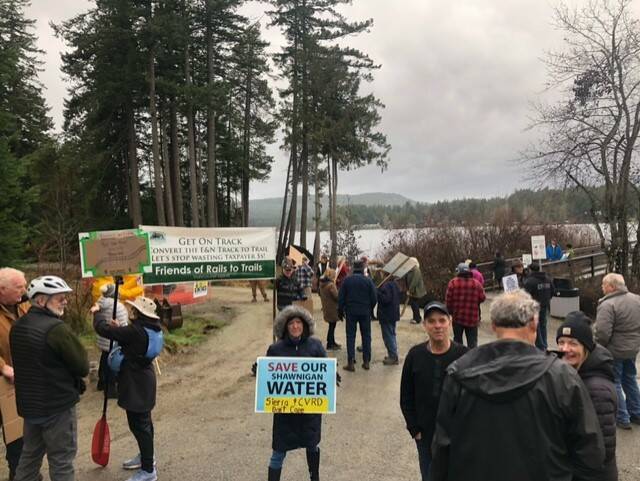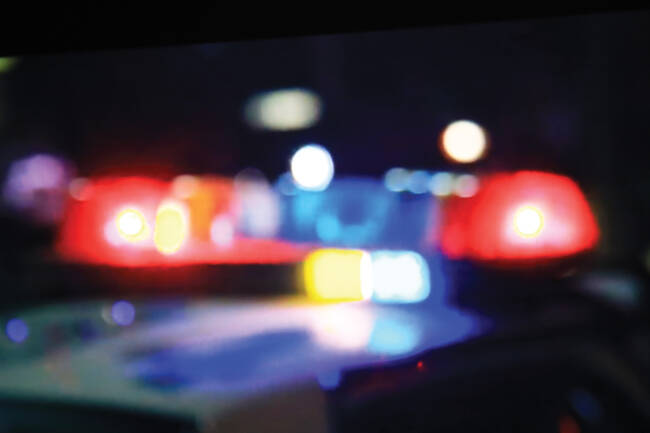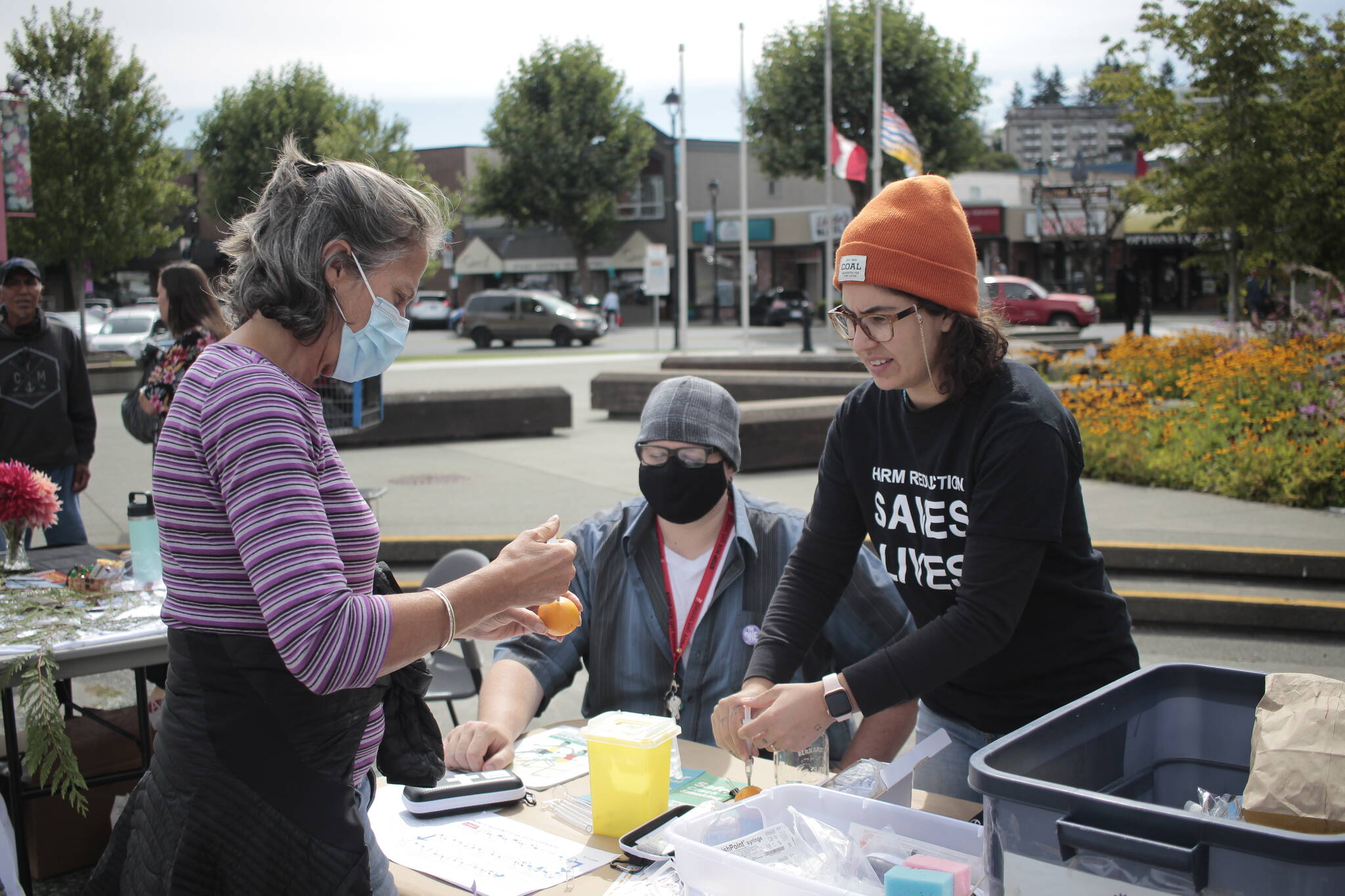Dozens of protesters concerned about the long-planned phase three of the Shawnigan Village Rail Trail project temporarily delayed work at the site on Jan. 5, and another protest was planned for this week.
Russell Lyon, a neighbour of the trail expansion who has long opposed it, said the intention of the protest was mainly about environmental education, protecting the watershed, and, to a lesser degree, private property owners’ right to cross the trail corridor to access their properties.
He said the protesters blocked a dump truck and the RCMP were called, and work was delayed for about an hour at the peaceful protest until participants moved on.
RELATED STORY: SHAWNIGAN LAKE TRAIL EXPANSION PROJECT SET TO BEGIN IN OCTOBER
Lyon said that among the environmental issues the protest wanted to draw attention to is the risk to the ecology of Shawnigan Lake of removing 3,000 square metres of vegetation from the riparian zone and cutting down tall trees to make way for the trail expansion, as well as depositing up to 400 dump truck loads of fill to construct a trail bed in the lake’s flood zone.
The 1.4-kilometre extension project is intended to be a multi-use public trail that will be constructed by the Cowichan Valley Regional District within the E&N rail corridor, which is owned by the Island Corridor Foundation, next to Shawnigan Lake, between Thrush Road at Shawnigan Wharf Park and Old Mill Park.
The project, which is the third section of the ongoing trail project at the lake, has been identified by the district as an important community pathway connection opportunity within the Shawnigan Lake community parks and trails master plan that was developed, with input from community, several years ago.
But some local residents, including Lyon, have been fighting against the trail extension since it was first planned, and are not pleased the CVRD is moving forward with it.
RELATED STORY: NEXT PHASE OF SHAWNIGAN LAKE TRAIL PROJECT GETTING MIXED REVIEWS
The concerns about the project cover a wide range of issues, including the environmental damage the trail could have on the lake, the fear that some lakeside landowners will be blocked from free access to their properties, and that the public’s use of the trail will infringe on these property owners’ privacy.
As for property access, Lyon said seven property owners adjacent to the project have made applications to the Canadian Transportation Agency for suitable crossings to access their properties across the trail system.
“Our crossing rights have been determined by the agency’s decisions, but the Island Corridor Foundation and the CVRD have refused or failed to take practical steps to finalize suitable crossings at mileage points specified in the agency’s decisions,” he said.
In response to the protest, CVRD officials said the regional district “values and respects the diversity of Shawnigan Lake community members’ opinions and feedback, including the right to peacefully protest.”
“This CVRD board-approved project is proceeding at this time following many years of public engagement, for which the CVRD has received positive feedback from a majority of Shawnigan Lake residents,” said a statement from the regional district Wednesday morning.
The statement went on to say that publicly transparent environmental and engineering assessments and reviews determined the project could continue “with minimal impact risk to Shawnigan Lake and its environment, be responsive to environmental regulatory requirements and achieve appropriate environmental mitigation measures, all while providing for the multi-use village pathway long envisioned by the Shawnigan Lake community.”
During the project, appropriate native plants will be installed in areas impacted by invasive species and setbacks of the trail from the lake edge will be maintained.
“Additional environmental protection measures during construction will be guided by environmental management plan conditions specifically developed for the project, inclusive of sediment controls and monitoring by qualified environmental professionals,” said the statement.
Construction is slated to continue through to Spring 2024.




